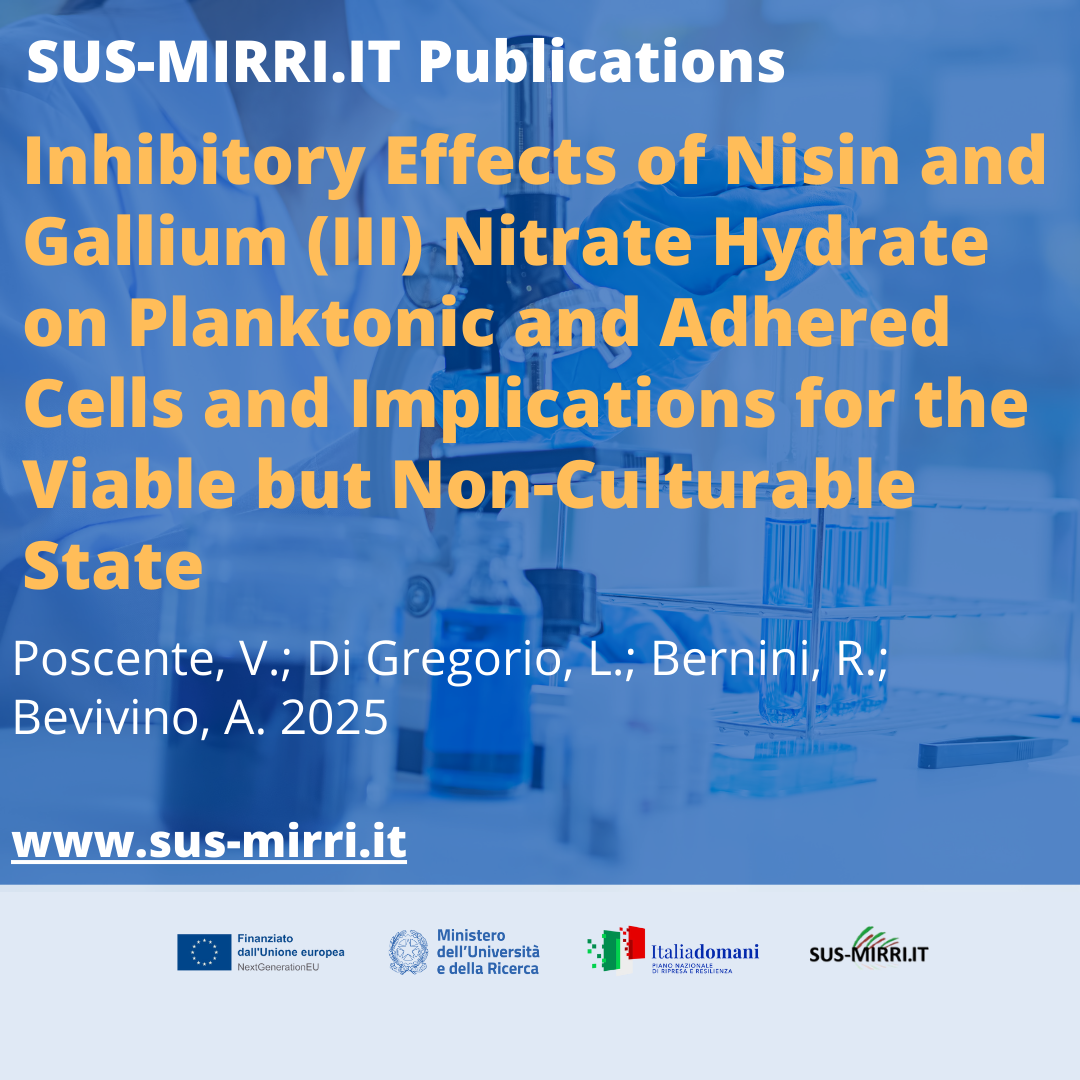Poscente, V.; Di Gregorio, L.; Bernini, R.; Bevivino, A. 2025 Inhibitory Effects of Nisin and Gallium (III) Nitrate Hydrate on Planktonic and Adhered Cells and Implications for the Viable but Non-Culturable State Microorganisms 13(2): 276 https://doi.org/10.3390/microorganisms13020276
ABSTRACT
Effective antimicrobial and biofilm control strategies require an understanding of the differential effects of antimicrobial agents on the viability and culturability of microbial cells. A viable but non-culturable (VBNC) state, a survival strategy of non-spore-forming bacteria in response to adverse conditions, poses a significant challenge for public health and food safety. In the present study, we investigated the antimicrobial and antibiofilm effects of nisin and gallium (III) nitrate hydrate against the Gram-positive strain Lactiplantibacillus plantarum subsp. plantarum DSM 20174 and the Gram-negative strain Pseudomonas fluorescens ATCC 13525, respectively. Both strains were chosen as model systems for their relevance to food and clinical settings. Culture-based methods and flow cytometry (FCM) were used to evaluate the culturability and viability of both planktonic and sessile cells, providing insights into their physiological response to antimicrobial treatment-induced stress at different concentrations (100, 250, 350, and 500 ppm). The findings highlight the strain-specific action of nisin on L. plantarum and the promising antibiofilm effects of Ga (III) against P. fluorescens. This study underscores the promising potential of FCM as a powerful tool for high-throughput analyses of antimicrobial efficacy, providing valuable insights into developing targeted biofilm control strategies for food safety and clinical applications.
Read more at: https://www.mdpi.com/2076-2607/13/2/276



